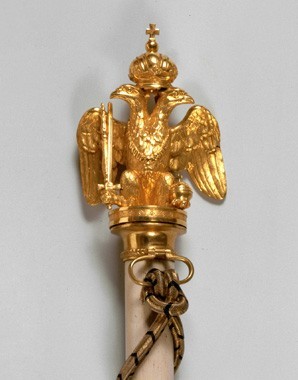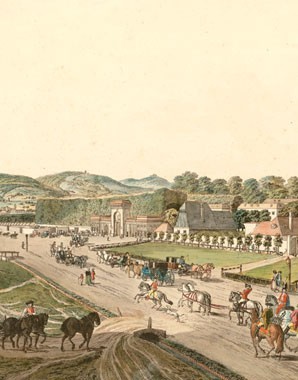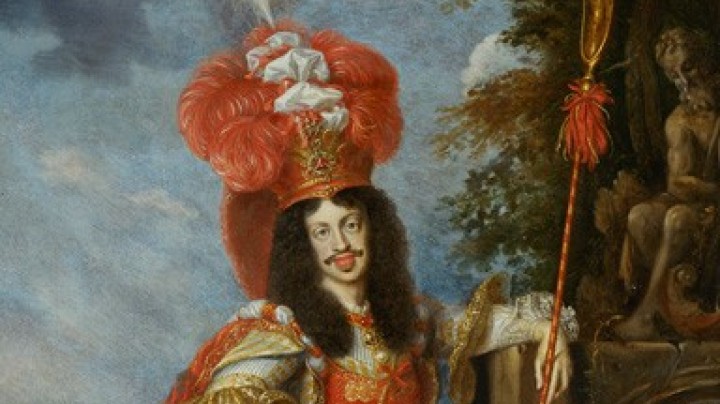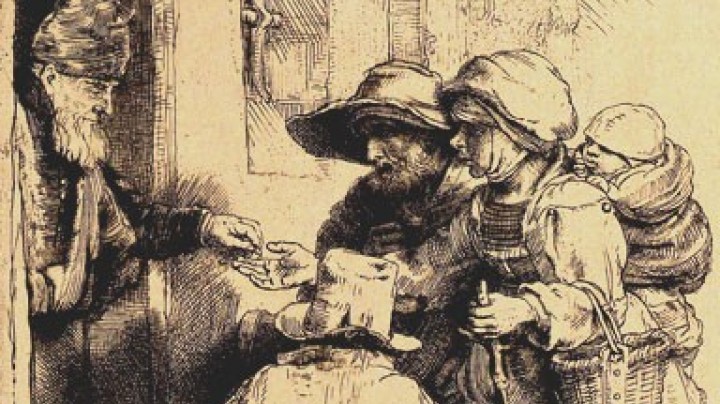Happy imperial holidays – summer residences around Vienna
Even an emperor needs a holiday now and again. However, before the invention of the railway, travelling was laborious and slow. Thus in order to provide the imperial family with opportunities for recreation a cluster of summer residences grew up around Vienna: as soon as the emperor slept somewhere other than the Hofburg this was counted as ‘sojourning in the country’, and the rules of Court etiquette were relaxed.
While Schönbrunn is undoubtedly the most famous of the imperial ‘holiday resorts’ in the immediate environs of Vienna, there were several other former summer residences in the locality of which today often only traces remain.
The pleasures of an imperial summer can perhaps best be imagined in the Alte Favorita in the Augarten. The attraction of the setting originally consisted in the contrast between the strict geometrical lay-out of the avenues and the surrounding wilderness of the Danube wetland forests. Destroyed during the Turkish siege of Vienna in 1683, the palace was subsequently rebuilt in much reduced form, but the gardens, now open to the public as one of Vienna’s city parks, still retain their original Baroque layout.
Another favourite imperial seat was the Neue Favorita, which gave its name to the Viennese workers’ district of Favoriten. Contemporary reports mention not only the palace, whose harmonious, elongated facade still exists, but also the gardens as a point of interest. Divided into separate sections, the gardens were impressive in their variety: waterworks and grottoes provided refreshing coolness, in the bosquets and hedged enclosures one could stroll in the shade, and a shooting place and a tiltyard provided opportunities for exercise. However, the present state of the gardens makes it hard to imagine that the Favorita, which had an outdoor theatre as well as a theatre building (Comoedi-Saal), was the setting for elaborate courtly festivities and opera performances.
It was here in this palace that Emperor Charles VI died in 1740, the last Baroque monarch of the House of Habsburg. His death marked the closing of an era, and not just for the Favorita. Maria Theresa gave the palace to the Jesuits to establish the Theresianische Ritterakademie, a school for the scions of noble houses. Today the complex houses the private secondary school known as the Theresianum together with the Diplomatic Academy.
Imperial presence can also be inferred from the name of another former Habsburg estate in Vienna: the hunting lodge of Kaiserebersdorf is an extensive complex and served not only the imperial passion for hunting but was also where imperial brides spent the night before their ceremonial entry into the city.
Much loved by her forebears, this imperial hunting estate was dedicated by Maria Theresa to various state welfare institutions: initially used as an orphanage and poorhouse, today the complex is a penal institution.




















